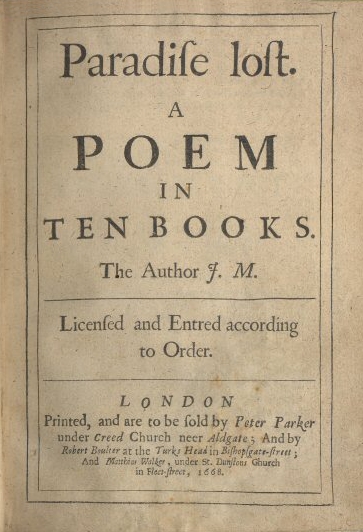 For those who are new to SEO writing, there can be a little bit of a learning curve, even if you’re already an experienced writer. You need to learn things like how to find and incorporate authoritative links, how to use keywords, and how to write title tags and meta descriptions. That last part seems to be difficult to master for many people, even experienced SEO writers, so we thought we’d take a few moments to review these topics, starting with how to write title tags for search engine optimization. Read more ›
For those who are new to SEO writing, there can be a little bit of a learning curve, even if you’re already an experienced writer. You need to learn things like how to find and incorporate authoritative links, how to use keywords, and how to write title tags and meta descriptions. That last part seems to be difficult to master for many people, even experienced SEO writers, so we thought we’d take a few moments to review these topics, starting with how to write title tags for search engine optimization. Read more ›
What Is a Title Tag, and How Do You Write One?
Helping the Reader Along With Transition Words
 There’s something to be said for keeping your writing simple and concise, but it’s easy for some writers to take this too far, creating sentences that sound like staccato drum beats rather than music to your ears. Many times, the problem is that their sentences are just too short and choppy, lacking the variety and complexity needed to lead the reader naturally from one thought to the next. What’s needed is sentence and paragraph transitions, but alarmingly, it seems like fewer people have been taught how to use transitions at school in the past few decades. But don’t worry: It’s never too late to learn something new and improve your writing. Read more ›
There’s something to be said for keeping your writing simple and concise, but it’s easy for some writers to take this too far, creating sentences that sound like staccato drum beats rather than music to your ears. Many times, the problem is that their sentences are just too short and choppy, lacking the variety and complexity needed to lead the reader naturally from one thought to the next. What’s needed is sentence and paragraph transitions, but alarmingly, it seems like fewer people have been taught how to use transitions at school in the past few decades. But don’t worry: It’s never too late to learn something new and improve your writing. Read more ›
How to Start a Book Club

Photo by K. Kendall (Flickr)
With the arrival of summer and the end of the school year upon us, it’s a good time to take stock of our reading goals for the year. After all, summer is a perfect time for reading, whether it’s enjoying a good beach read on vacation, lazily paging through a classic while sitting on the porch feeling too hot to move, or working on an assigned reading list for the upcoming school year. And if you’ve gotten a little lazy about that New Year’s resolution to read more books this year as the months have gone by, the end of a school year feels like a good time to make a fresh start. One great way to make headway on that to-read list is by joining a book club, either in person or online … but what if there isn’t one near you or you can’t find one that appeals to you? Beverly Cleary once said, “If you don’t see the book you want on the shelves, write it.” Similarly, if you don’t see a club you want to join, perhaps you should create one. Read more ›
How to Use Keywords: A Recipe for Success
 In the world of content marketing, keywords are king, and many articles that freelance writers are asked to complete will include a list of keyword phrases that need to be incorporated into the text. What are keywords, exactly, and how should you use them? There are two approaches to this sort of task, but only one of them will lead to the creation of consistently high-quality, well-thought-out content. The difference lies in how you view SEO keywords: as chunks of text to be shoved into an existing framework or as inspiration for an original creation. Read more ›
In the world of content marketing, keywords are king, and many articles that freelance writers are asked to complete will include a list of keyword phrases that need to be incorporated into the text. What are keywords, exactly, and how should you use them? There are two approaches to this sort of task, but only one of them will lead to the creation of consistently high-quality, well-thought-out content. The difference lies in how you view SEO keywords: as chunks of text to be shoved into an existing framework or as inspiration for an original creation. Read more ›
Medial S: The Old English S That Looks Like F
 Have you ever looked at a picture of a really old document or an inscription on the wall of an old building and thought, “Why are there F’s instead of S’s? Did F stand for S back then?” But no, it’s only some of the S’s that look like F’s, not all of them: You’ll see both letters right next to each other, so it’s not like they didn’t have the letter S back then. Confusing, right? Read more ›
Have you ever looked at a picture of a really old document or an inscription on the wall of an old building and thought, “Why are there F’s instead of S’s? Did F stand for S back then?” But no, it’s only some of the S’s that look like F’s, not all of them: You’ll see both letters right next to each other, so it’s not like they didn’t have the letter S back then. Confusing, right? Read more ›
Sometimes, it's not just about doing well, it's about doing your best. Writing blogs exist to help you sharpen your skills, expand your vocabulary, and improve your grammar. Our blog aims to do just that and much more. We want to help you boost your skills and your confidence in yourself as a freelance writer. Blog posts from Online Writing Jobs cover a variety of topics, from content marketing tips to detailed grammar guidance. You can stay up to date with any major announcements as well. Learn about writing, marketing, and how to improve your career in freelance writing. Blogs, articles, and in-depth pieces can be easier and more fun to complete when you continue to aim for your best. Let us know what you think by leaving us comments or finding us on social media. Be sure to follow us on Facebook and Twitter!
